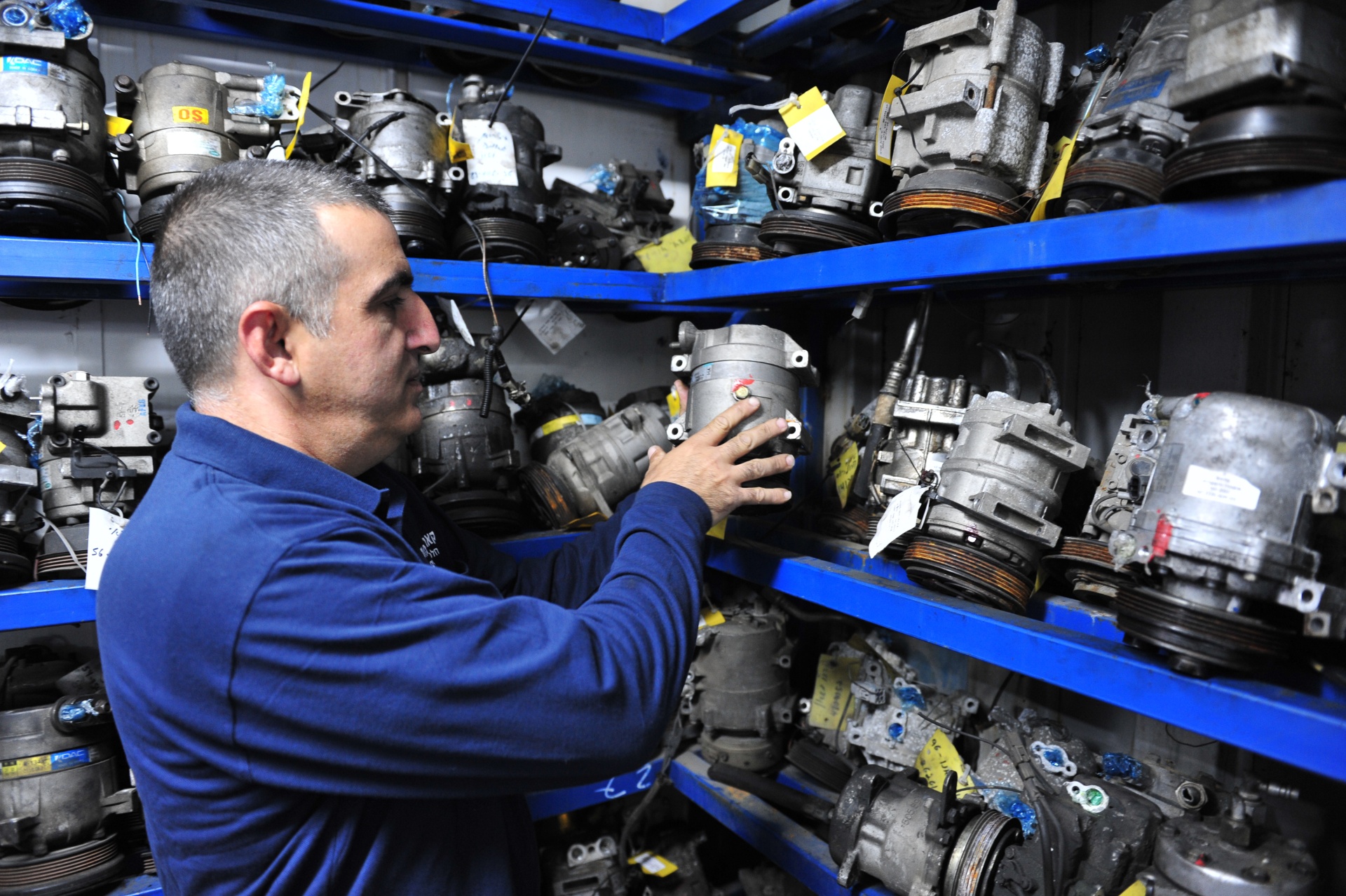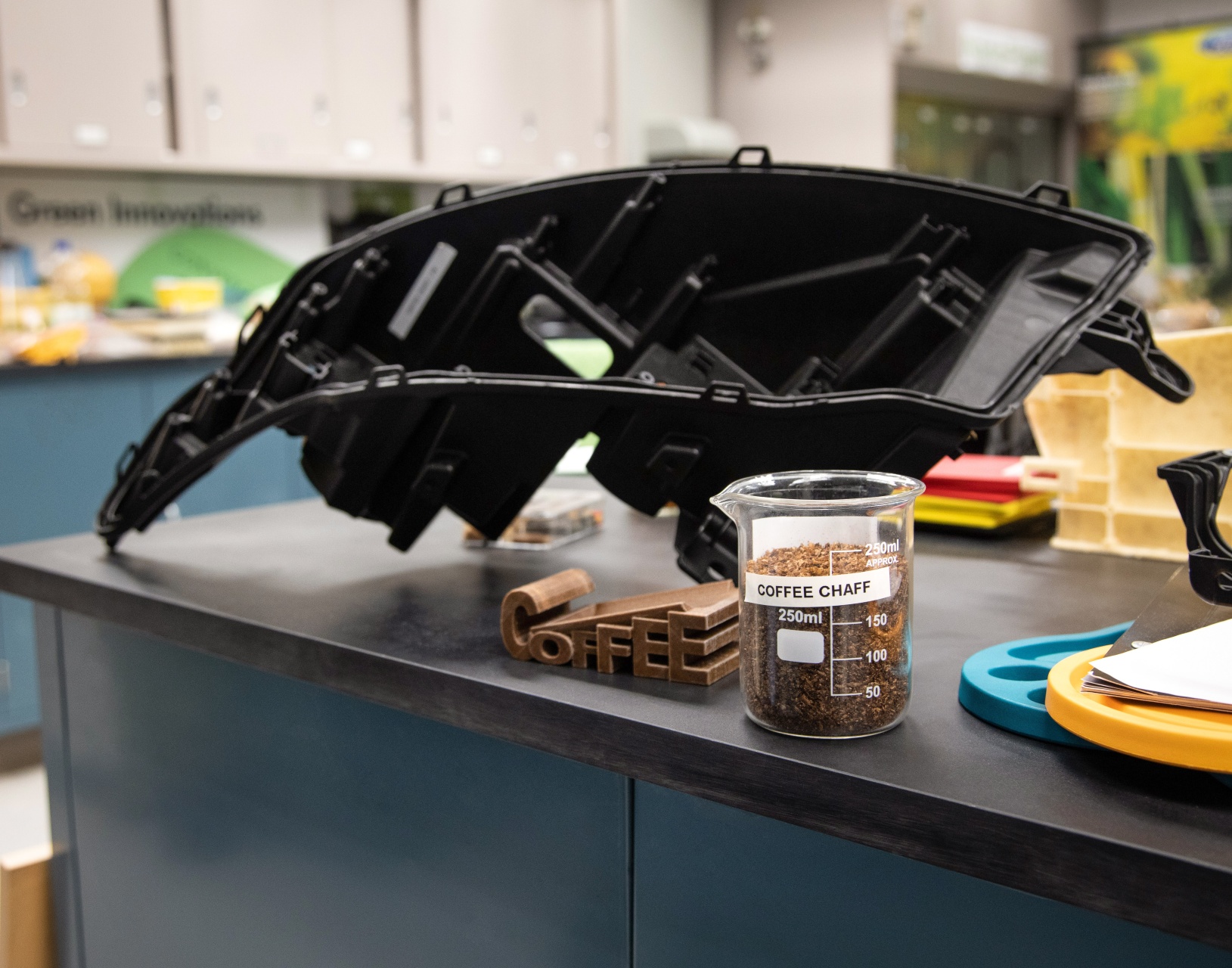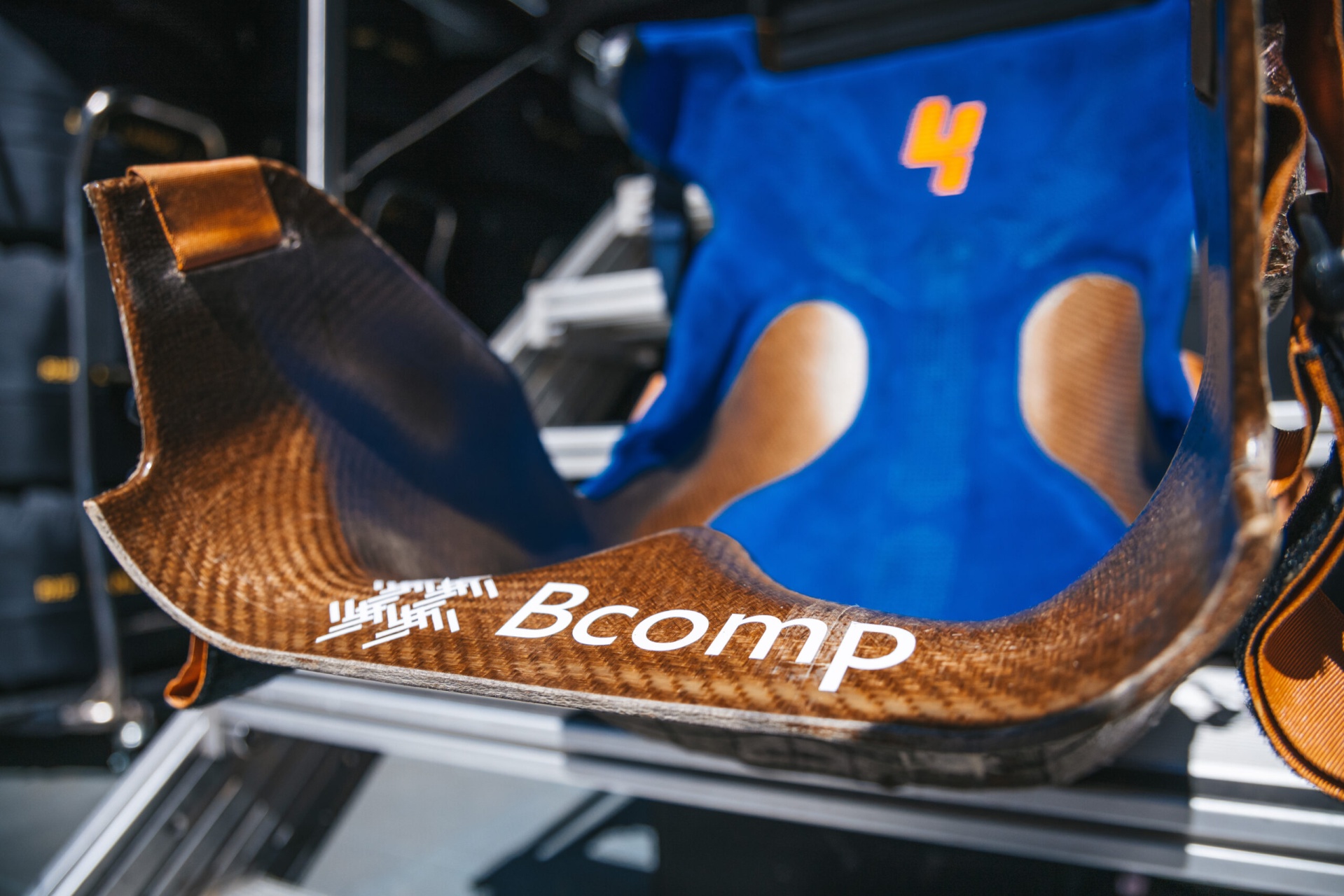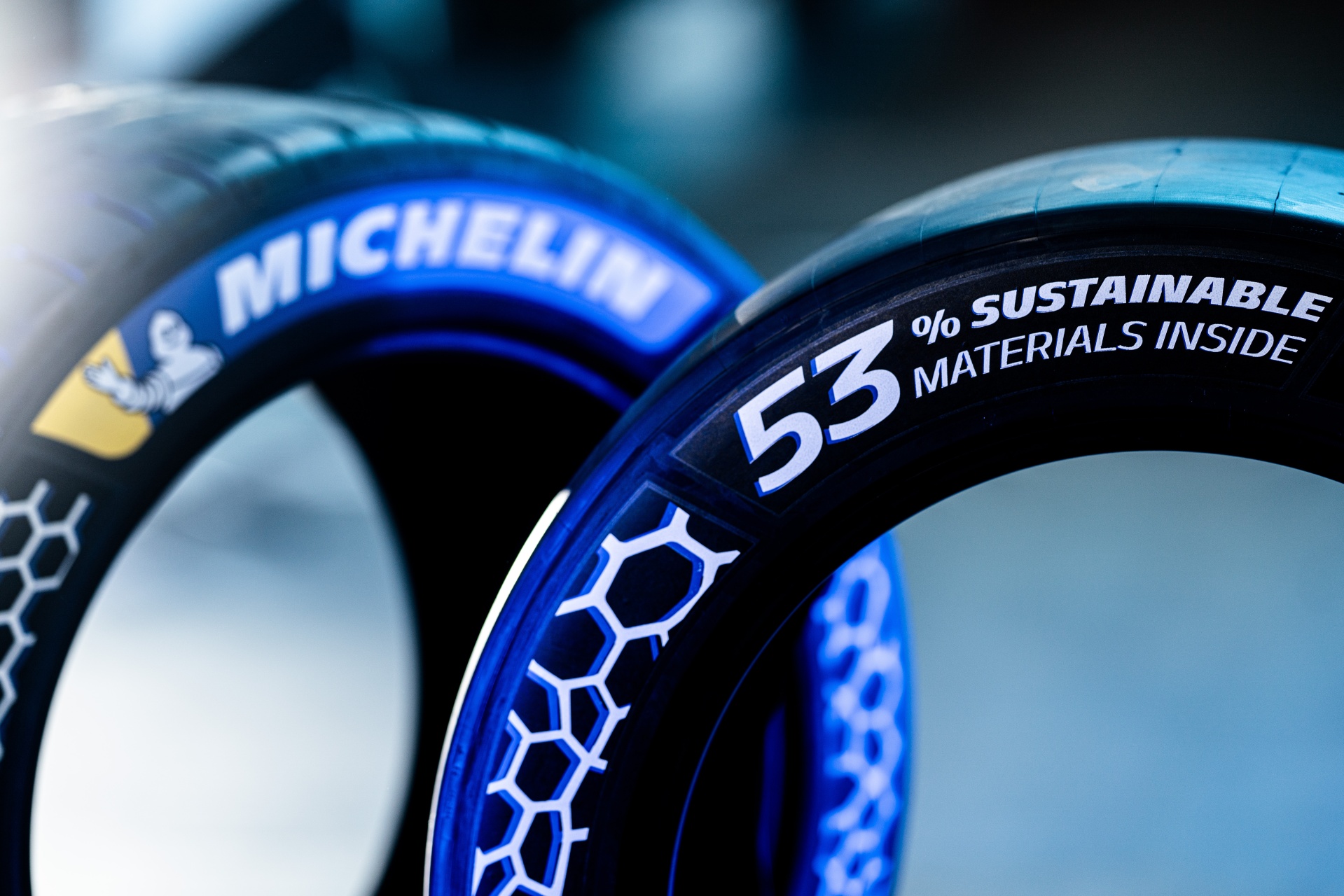
A CAR IS ALSO SUSTAINABLE, ORGANIC AND... SOON VEGAN?
A CAR IS ALSO SUSTAINABLE, ORGANIC AND... SOON VEGAN?
The heated debates about personal mobility tend to obscure the progress made by the automotive industry in terms of sustainability. Of course, local CO2 emissions, although they have been falling by almost 20% in Switzerland since 1990 according to the OFEV (Swiss Federal Office for Environment), remain high; 32% are generated by the transportation of goods and people. At European level, the proportion for transport reaches 27% of total CO2 emissions, of which almost three-quarters are due to road traffic.
However, the sector also contributes to emission reductions, starting with propulsion systems. Electromobility provides a first answer to this problem. Hydrogen is a reality and the depollution systems of thermal vehicles are more and more sophisticated and efficient, while the development of synthetic fuels is on the verge of industrialisation. And that’s only the “visible” aspects of a vehicle.
The efforts made by the automotive industry that should also be taken into account include the resources used for vehicle production. On this point, few industrial sectors can claim to have made as much progress as the car industry. Did you know that the recycling rate of a car has increased from 70% in 1998 to 95% today? This is a record for such a technologically complex object, while the rate for glass is 96%, 83% for PET and only 70% for batteries.
Reclaimed waste
Mass remains a major constraint in the design of a vehicle. The amount of safety equipment and new propulsion systems, although “clean” are heavy. The batteries of an electric car weigh two to three times more than an internal combustion engine. So, the other components, or even the structure, have to be made as light as possible so as not to produce a heavy and zero-emission car that consumes an incongruous amount of energy.
In addition to using recycled materials for several years now, manufacturers have developed solutions that make materials lighter and that include the notion of sustainability. They use highly technical materials such as carbon, carbon fibre reinforced polymers (CFRP), aluminium or titanium, and make use of plant waste as much as possible for comfort or appearance. Ford is a pioneer in this field; the concept is not new since it goes back to the brand’s debut in 1903 for carpet manufacturing. Henry Ford sourced crop waste headed for incineration from farmers around Detroit and reused it. Today, soy and coconut shells, cellulose, fruit and vegetable peel, distillation residue and even shredded old banknotes are used in the composition of insulators, foams and other padding. Several thousand tonnes of oil are saved each year, which come on top of the significant benefits in terms of vehicle weight plus time and energy savings for parts production.
All brands use recycled or upgraded materials at different stages. Sustainability is not just about the technical parts of a car; it is about upstream production. At Cupra, for example, it is part of the specifications from the very development of the vehicle, the interior design. This concern is all the more cogent for electric vehicle, which are, by definition, free of direct emissions while being used. Amanda Gomez, who is responsible for “Sustainable Design” for Cupra, explains the approach that the brand started on its Born, both for the layout and the upholstery, whose fabric is made from PET bottles.
Apart from Cupra, the Seaqual initiative supplies Fiat with its fabric, whose fibres are made from plastic recovered on beaches and at sea. Beyond the “simple recycling” of waste, Seaqual’s activity is part of a virtuous circle. Its activity involves fishermen as well as NGOs and private initiatives to clean up beaches and oceans, as well as research laboratories and authorities. Everyone derives benefits from this action in their own individual way.
Swiss know-how
Switzerland, which houses the headquarters and research offices of international automotive subcontractors, is no exception. For example, the Fribourg company, Bcomp, develops panels made of thermoformed natural materials for the layout of the interiors of the future Volvo Group models. It also uses competition as a laboratory; the company supplies McLaren with Formula 1 seats, bodywork parts for Porsche in its monotype championships and the base shell for the Odyssey 21, the buggy used in the Extreme E electric rally-raid championship – all made of natural fibres. These experimental phases and initial uses in competition obviously take place before implementation on production vehicles, which is coming up soon.
These new lightweight materials meet the same quality, durability and safety criteria as synthetic materials. By using these materials, the mass of plastic used for a car can be reduced by up to 30%. This reduces consumption and CO2 emissions. The manufacture of these parts is also free of fossil resources; throughout the entire cycle, the carbon footprint is reduced by 75% and costs are 30% lower than for synthetic materials.
The benefits are such that last March Bcomp completed a second round of financing of 32 million Swiss francs from investors, including Volvo, BMW, Porsche and Airbus through their respective investment subsidiaries.
The paint, too
The paint and lacquer industry is also changing. The use of water-soluble bases has now been the norm for all suppliers and manufacturers for nearly 30 years in the automotive sector. This change has reduced the use of solvents of chemical origin by 80% – which are highly polluting – while increasing the quality of the finished product. Thanks to technology, however, we can go even further.
The BMW Group is the first car manufacturer in the world to use matt paints made from biomass instead of crude oil in its European factories. Furthermore, BMW plants in Leipzig and Rosslyn (South Africa) also use sustainably produced corrosion protection. Renewable raw materials such as bio-waste or waste from sewage treatment plants are used as raw material for paints. The CO2 savings calculated by way of a process certified by TÜV will come to more than 15,000 tons of CO2 emissions by 2030.
The production process developed by BASF allows petroleum raw materials, such as naphtha, to be replaced with renewable substitutes from organic waste from the very early stages of paint production. This not only reduces the consumption of fossil resources, but also avoids CO2 emissions related to the production, transport and processing of crude oil.
The corrosion protection paints and matt paints used in the Leipzig and Rosslyn plants are chemically identical to those used previously, with the same properties as conventionally manufactured bodywork coatings. Since biosourced and conventional coatings are produced on the same line, BASF adopts an externally certified global assessment. The sustainable manufacturing process reduces CO2 emissions from paint production by more than 40%.
Listening to customer concerns
Another trend has emerged in California and is now spreading throughout Europe. The vegan movement has led Bentley to explore, with the Italian company Vegea, the use of new materials for the upholstery of its interiors, without compromising both the rendering and the quality over time. Vegan customers cannot conceive of about fifteen skins being used to line their car’s interior, however wonderful it may look. Even though the English brand ensures the cattle farms from which it is supplied operate sustainably, the latter are primarily run for meat production.
The Volkswagen group, Bentley’s parent company, is gradually exploring these new techniques for all of its brands. Above, we mentioned the Cupra brand efforts. VW had presented, on the concept anticipating ID.4, seating with the appearance of leather, but which was made from waste that comes from apple pressing. Named Apple Skin, this material has not yet met all the requirements for industrial use. In the meantime, the VW ID range, just like the Porsche Taycan can, however, be ordered with a completely leather-free interior. In a more accessible range, Volvo’s C40 Recharge follows the same reasoning. The vast majority of the polymers composing these layouts are also derived from recycling.
The usefulness of competition
Automotive competition, in addition to the absolute search for performance, has always served as a laboratory for ideas. This is where the 24 hours Le Mans race comes from. Last June, the tyre manufacturer, Michelin, unveiled at the Goodwood Festival of Speed, a new tyre comprised of 53% sustainable materials. This gum, still in the experimental stage, mixes traditional pure natural rubber with recycled carbon black from used tyres, but orange and lemon bark, pine resin, sunflower oil and recycled steel are also added. Thanks to the recipe for this mixture, a tyre that offers exactly the same performance and safety benefits as a conventional rubber can be obtained.
It should not be forgotten that this Clermont-Ferrand based company will make all its tyres from sustainable materials only by 2050.
All these developments, which will become widespread in the months and years to come, are not just anecdotal. Though different studies establish the share of the weight of materials and their manufacture in the carbon footprint of the vehicle over its entire lifespan at between 6 and 25%. The majority share, of course, remains linked to the energy used for locomotion. But as every gramme saved counts, every effort in this direction is of paramount importance.
Shutterstock/Polestar/Ford/BComp/BMW/Bentley/Porsche/Michelin/GIMS/JM














